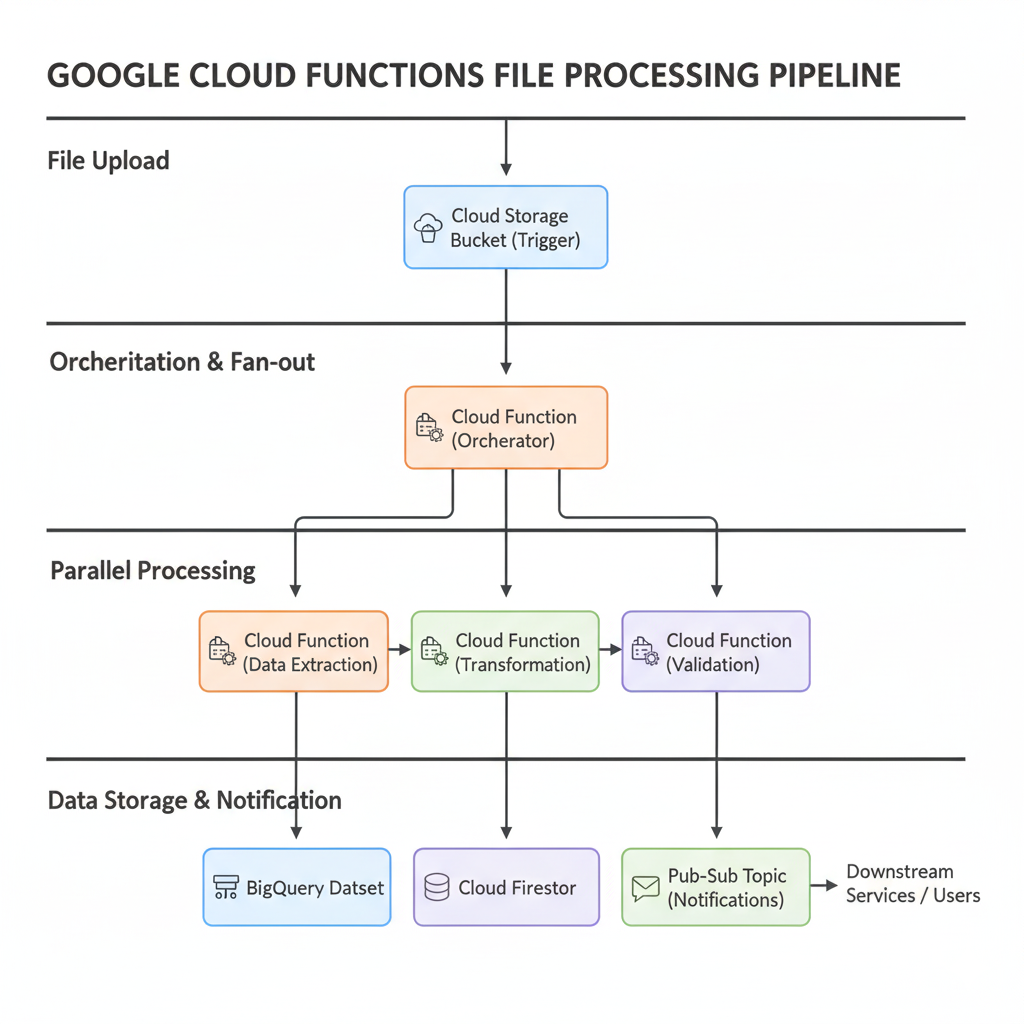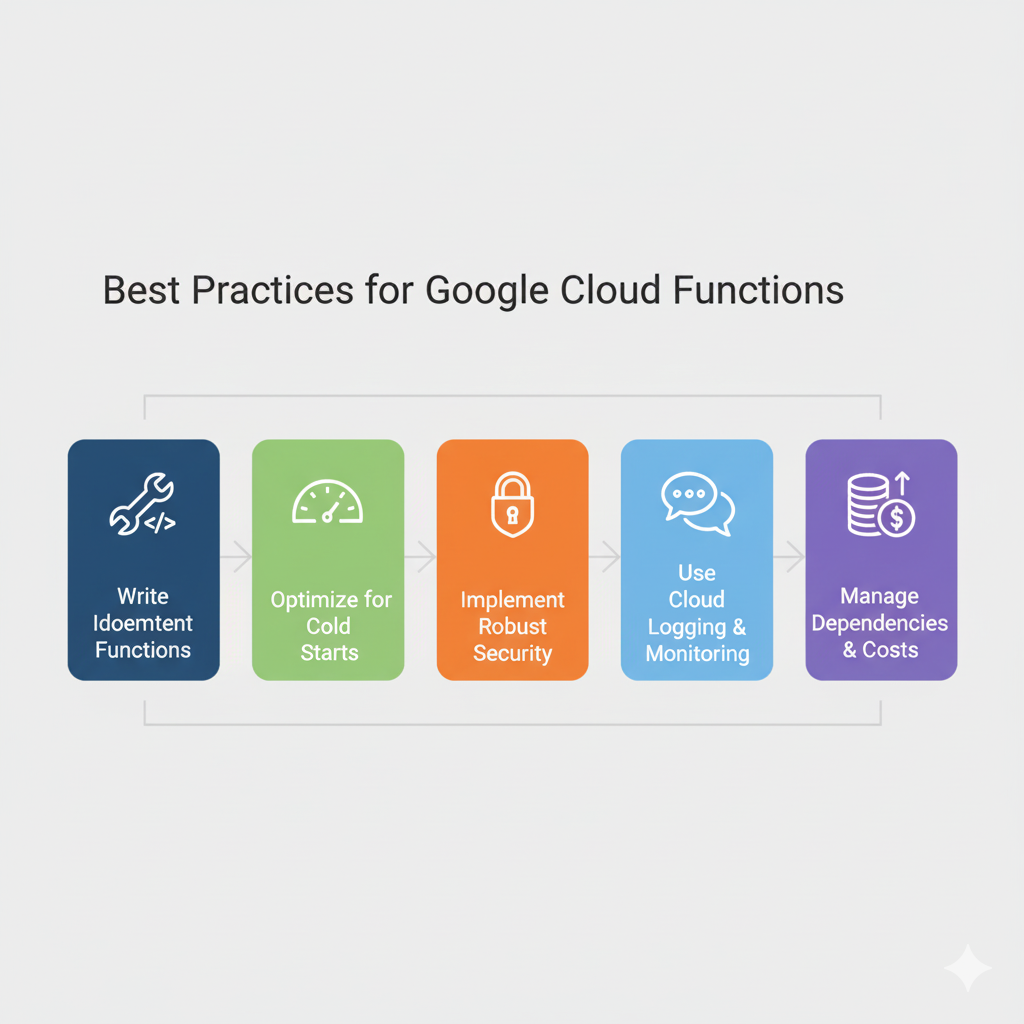Day 9 – Serverless Computing with Google Cloud Functions
Introduction
Serverless computing is revolutionizing the way cloud engineers build and deploy applications. In a serverless model, developers focus entirely on writing code without worrying about infrastructure management, scaling, or server maintenance. Google Cloud Functions (GCF) is GCP’s fully managed serverless compute service that allows you to run event-driven functions in response to various triggers.
At CuriosityTech.in, we guide engineers to master serverless architectures by focusing on real-world applications, scalability, cost optimization, and event-driven programming, ensuring a hands-on approach to becoming an expert in modern cloud computing.
What is Google Cloud Functions?
Google Cloud Functions is a lightweight, serverless compute service that executes code in response to events. It abstracts infrastructure management, allowing engineers to deploy small, independent functions with minimal setup.
Key Characteristics:
● Event-driven execution
● Automatic scaling based on demand
● Supports multiple languages: Node.js, Python, Go, Java, Ruby
● Fully managed environment
● Integrated with other GCP services (Pub/Sub, Firestore, Cloud Storage)
Why Use Cloud Functions?
| Benefit | Description |
|---|---|
| No server management | Engineers only write and deploy code; Google handles servers and scaling. |
| Event-driven architecture | Functions respond to triggers like HTTP requests, database changes, or file uploads. |
| Scalability | Functions scale automatically with demand, eliminating overprovisioning. |
| Cost-efficient | Pay only for execution time; no idle server costs. |
| Integration | Works seamlessly with Pub/Sub, Cloud Storage, Firestore, Firebase, and APIs. |
Core Concepts in Cloud Functions
- Triggers – Define what event will invoke the function.
○ HTTP Trigger: Function responds to HTTP requests.
○ Cloud Storage Trigger: Responds to object changes (upload, delete).
○ Pub/Sub Trigger: Event-driven messaging system triggers function execution.
○ Firestore Trigger: Responds to document changes in Firestore collections. - Execution Environment – Serverless runtime with managed scaling.
- Function Lifecycle – Functions have cold starts (first invocation) and warm starts (subsequent invocations). Cold start optimization is critical for latency-sensitive applications.
Practical Example: File Processing Pipeline
Scenario: Automatically process image files uploaded to a Cloud Storage bucket.
- Trigger: Cloud Storage event on file upload.
- Function Logic:
○ Validate file type and size.
○ Generate thumbnail using image processing library.
○ Store processed file in a separate storage bucket. - Notification: Publish status to a Pub/Sub topic or send email notification.
Diagram Concept: Event-Driven Flow:

Best Practices for Cloud Functions
- Optimize Function Size: Keep functions small and single-purpose.
- Handle Cold Starts: Use lightweight dependencies and warm-up strategies.
- Error Handling & Retries: Implement retry policies and structured logging.
- Security: Use IAM roles for function access, avoid embedding secrets.
- Monitor & Debug: Use Cloud Monitoring, Cloud Logging, and Error Reporting to gain visibility.
Performance Considerations
| Aspect | Recommendation |
|---|---|
| Cold Start Latency | Use smaller functions, reduce package size, and avoid heavy initialization. |
| Memory & CPU Allocation | Assign appropriate resources based on workload; higher memory = faster execution. |
| Concurrency | GCF auto-scales, but design stateless functions for concurrency safety. |
| Dependency Management | Minimize external libraries to reduce function size and startup time. |

Advanced Usage
- Event-Driven Microservices: Build modular, independent microservices responding to events.
- Hybrid Architecture: Combine Cloud Functions with Cloud Run or Cloud SQL for complex workloads.
- API Backend: Serve serverless REST APIs using HTTP triggers.
- Real-Time Data Processing: Stream analytics using Pub/Sub + Cloud Functions pipeline.
Curiosity Tech emphasizes building end-to-end serverless pipelines in labs to understand trigger-event relationships, cost optimization, and scalability.
Conclusion
Mastering Google Cloud Functions equips cloud engineers to design scalable, cost-efficient, and event-driven architectures. By understanding triggers, lifecycle management, performance optimization, and integration with other GCP services, engineers can build robust serverless applications.
At CuriosityTech.in, our hands-on labs and real-world projects guide engineers from basic serverless concepts to advanced pipelines, ensuring practical expertise and readiness for enterprise cloud challenges.

